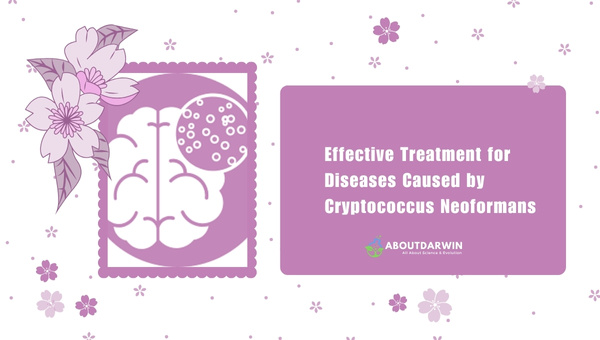Physical Address
304 North Cardinal St.
Dorchester Center, MA 02124
In the intricate tapestry of microbiology, the species Cryptococcus neoformans holds a significant place due to its extensive impact on human health.
This yeast-like fungus, despite its microscopic size, has an astounding ability to cause severe infections, particularly in those with compromised immune systems. Despite this threat, many of us are unfamiliar with this microbial marvel.
In this article, I am setting out to unveil the many facets of Cryptococcus neoformans. From its habitats and morphology to epidemiology and virulence factors that make it formidable- we’ll leave no stone unturned.
Contents
In our quest for understanding Cryptococcus neoformans, principles rest upon the in-depth exploration of its multiple aspects. The intent behind this is not just to navigate through its scientific facets but also to shine a light on how it impacts human health and what measures can be taken for treatment and prevention.

The guiding principle here also lays weight on public awareness about this organism’s potential health risks. With clearer insights into its habitats, morphology, infection-prone, and more, we naturally equip ourselves better to prevent or mitigate any diseases caused by it. After all, knowledge is the first line of defense!
The global distribution of Cryptococcus neoformans is wide and varied. This opportunistic pathogen seems to prefer certain habitats where it can multiply and spread more effectively. Demonstrating a particular affinity for bird droppings, especially those from pigeons, you’ll find this tenacious fungus thriving in soil enriched with avian feces.
While it’s found worldwide, some researchers have noticed that the prevalence appears to be higher in specific geographical locations.
Studies suggest an estimated one million cases of cryptococcal meningitis per year among people with HIV/AIDS occur in sub-Saharan Africa— emphasizing the disease’s burden and regional prevalence is critical for health organizations developing strategies to combat it.
Although Cryptococcus neoformans is pervasive, not everyone exposed will fall ill. Certain groups are more susceptible to its infection due primarily to weakened immune systems or other health complications.
People living with conditions like HIV/AIDS are at a heightened risk due to their compromised immune defense mechanisms.
Aside from those dealing with immunodeficiency disorders such as HIV/AIDs or undergoing immunosuppression therapy post-organ transplantation, older adults, too, seem to be at an elevated risk.
A common thread runs through all these high-risk groups – a compromised immune response leaving them vulnerable to Cryptocurrency neoformation infections.
Also Read: Unveiling MacConkey Agar: Composition, Principles, and Uses
Cryptococcus neoformans, despite their seemingly benign prevalence in the environment, can be a significant cause of disease, particularly among those with weakened immune defenses.
Vividly demonstrating this fungi’s pathogen potential is a range of clinical manifestations it can result in when conditions are ripe.
The infections caused by Cryptococcus neoformans primarily manifest as lung diseases and severe brain infections. Pulmonary cryptococcosis is a lung disease that may appear similar to pneumonia or tuberculosis. Symptoms might include wheezing, chest discomfort, and coughing.
Cryptococcus neoformans is infamous for causing cryptococcal meningitis – an inflammation of the membranes covering the brain and spinal cord known as meninges. Characterized by symptoms such as headaches, visual problems, confusion, or changes in behavior, this infection can be deadly if not diagnosed promptly.
Individuals may also experience cutaneous infections where Cryptococcus neoformans infect the skin, producing localized lesions. Although less common than pulmonary or neurological manifestations, these skin lesions are often a clue pointing to underlying disseminated infection—especially in immunocompromised individuals.
The table below breaks down some of these diagnostic tests used commonly:
| Test Type | Description |
|---|---|
| Lung Tissue Biopsy | A procedure where a small piece of lung tissue is removed and examined for the presence of Cryptococcus neoformanS |
| Lumbar Puncture (Spinal Tap) | The cerebrospinal fluid (CSF) surrounding the spinal cord & brain is sampled & analyzed for the fungus. |
| Blood Culture | This diagnostic test looks for the presence of Cryptococcus neoformans in the blood. |
| Skin Testing | The skin lesion might be biopsied and culture tested for Cryptococcus |
| Unraveling the Science Behind Virus Cultivation Techniques | This blood test identifies if an individual possesses a specific antigen created in response to infection with cryptococcus neoformanS |
The importance of early detection cannot be emphasized enough, considering the serious health complications that can arise from untreated infections. Professionals conduct these tests based on symptoms presented, medical history, and populations at risk to ensure efficient diagnosis and, consequently, prompt treatment.
Also Read: Exploring Differences: Gram Positive vs Gram Negative Bacteria
Treatment options for diseases borne out of Cryptococcus neoformans infections are quite comprehensive, typically involving extended periods of therapy. Let’s break down the common medication procedures:

Remember that these treatment plans can vary significantly depending upon various factors such as the patient’s overall health, immune status, and severity of infection caused by Cryptococcus neoformans. Always consult your healthcare provider for personalized guidance regarding medical treatments.
Also Read: Isostatic Rebound: Uncovering Post-glacial Rebound Process
Cryptococcus neoformans is a fungus that is widely distributed and is often found in bird droppings.
Yes, these infections can be treated effectively using antifungal medications, usually involving combination therapy followed by maintenance therapy to prevent relapses.
Those with weakened immune systems, such as individuals with HIV/AIDS or those undergoing immunosuppressive therapies, are more susceptible to infection.
This fungus commonly resides in pigeon droppings and soil enriched with bird feces, and it has a worldwide presence.
Cryptococcus neoformans is a yeast-like fungus that can cause infection, particularly in individuals with compromised immune systems.
Also Read: Sanborn Fire Insurance Maps: A Comprehensive Guide
In conclusion, Cryptococcus neoformans, while ubiquitous, pose a significant health threat, especially to those with compromised immune systems. From its varied habitats and fascinating morphology to its epidemiological concerns and associated diseases – the multifaceted aspects discussed in this article make one thing clear: information is vital.
Understanding its biology and how it’s diagnosed and treated can make a world of difference in our collective fight against this infectious pathogen.
By raising awareness and promoting preventive measures, we could prevent undue health complications while fostering an environment that not only respects but understands microbial life forms co-existing with us. Knowledge, indeed, is power when fighting microscopic foes like Cryptococcus neoformans.